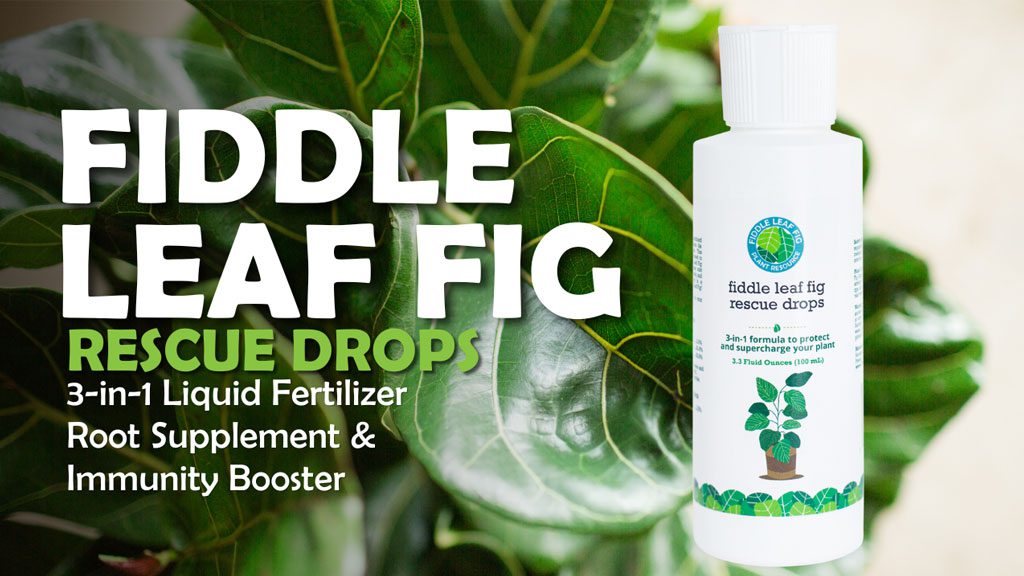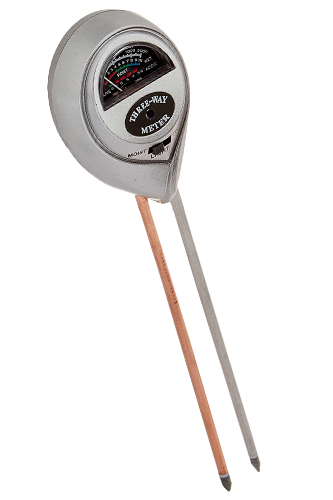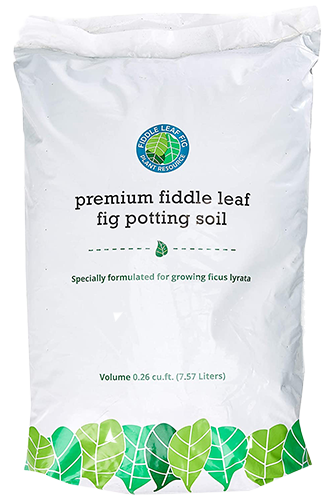Have you seen small holes, dark spots, or other evidence of insects on your fiddle leaf fig? It’s important to act quickly during a fiddle leaf fig insect infestation to save your plant and keep the insects from spreading to your other plants.
Today, we’re excited to share a new video all about fiddle leaf fig insect problems. There are quite a few insects that can attack your fiddle leaf fig, and it’s important to know the differences in order to treat them properly. Watch this video to identify the insects affecting your plant and learn the proper treatment for each. You can use this spray to kill the most common insects affecting your plant. We recommend our Houseplant Leaf Armor to protect against fiddle leaf fig insect as well as bacteria and fungus.
To learn more, check out Four Things That Are Killing Your Fiddle Leaf Fig.
How to Handle Fiddle Leaf Fig Insect Problems
Let’s talk about the common insects that threaten to bother, hinder, and even destroy your prized fiddle leaf fig tree.
How do you identify early signs of a fiddle leaf fig insect infestation? What treatment options and prevention steps can you take to effectively manage and repel pesky visitors?
We’ll start with the bad guys first, those menacing characters that you must deal with to save your plant. Then we’ll quickly cover a few benign bugs that you might see that might be attracted to plants without really threatening to take up permanent residence.
Public Enemy #1: Spider Mites
Spider mites are among the top, if not THE top antagonist of our favorite indoor tree. This is the number one fiddle leaf fig insect issue.
The trouble with most online educational resources that teach about spider mites is that they tend to show widespread infestations.
Fiddle leaf fig caregivers like us, though, need to know what an early-stage problem looks like.
The first warning sign of spider mites is webbing. If you see even a hint of webbing like thin, silky strands, inspect the leaves carefully for fiddle leaf fig insect. That web is the number-one indication of the presence of spider mites.
Number two is the appearance of small, clustered dots on the leaves of you plant. When disturbed, these little dots might even move, and that confirms it. You’ve got spider mites.
How to Remove Spider Mites From a Fiddle Leaf Fig
The good news is that spider mites are the easiest insect to dislodge from your plant. Simply fill a kitchen syringe with water and spray the little dark dots until you don’t see any more.
I prefer to do this outside, but during winter, the bathtub or kitchen sink is also a great place to treat for spider mites. Spider mites are one of the most common threats to the beautiful ficus lyrata, so stay vigilant.
Pest #2: Mealybugs
The next most common fiddle leaf fig insect is the mealybug.
Mealybugs almost always find their way into your home by hitchhiking on other plants. Once on your fiddle leaf fig, these soft-body bugs suck the sap out of the leaves, causing them to eventually fall off. They secrete a wet-looking substance called honeydew, and the female mealybugs produce a cottony material to lay their eggs.
These last two nuggets of information are helpful in identifying the pest. If no white bugs are visible, simply keep an eye out for a cottony substance or wet-looking residue.
Treatment can be similar to what you would do for spider mites, but be prepared for a mealybug recurrence if all you use is water.
While you may find mealybugs easy to dislodge, these guys are a lot more difficult to find in the first place.
Their babies, called crawlers, are so tiny, you cannot see them with the naked eye. Plus, many mealybug infestations start in the roots of the plant, where they are invisible even to the most observant fiddle leaf fig caregiver.
Finally, when they do move around, they’re usually hanging out on the undersides of leaves or in the nooks and crannies where those leaves emerge from the trunk and branches.
How to get rid of mealybugs
When you’re ready to step up your treatment plan and apply something more potent than a jet of water, grab some rubbing alcohol and a couple of Q-tips.
Dab each little mealybug and cotton nest with a drop of rubbing alcohol to neutralize the bugs that you can see. For the villains you can’t see, there are a few additional options. Use our Houseplant Leaf Armor, designed for houseplants to protect against insects, bacteria, and fungus. (This product works just like neem oil but without the unpleasant smell! As an added bonus, it also cleans and adds shine to your houseplant’s leaves.) Or you could apply neem oil, but be sure to follow the manufacturer’s instructions for dilution and application.
Another inexpensive way to address the mealybug problem is to introduce natural predators into your space. I ordered live ladybugs online to be delivered to my house, and I released them in our sunroom to eat the mealybugs and their babies. Thankfully, I don’t mind that they wander around, and they do a great job controlling those mealybugs.
Pest #3: Gnats
Gnats are another common fiddle leaf fig insect associated with vertical or indoor gardens.
The counterintuitive good news, though, is that fiddle leaf fig favors conditions that are not conducive to fungus gnats. So if you do have gnats, your plant is likely in a darker place with too much water anyway.
Keep your fiddle leaf fig in a bright place, something gnats hate, and using well-draining, regularly aerated, loosely packed soil. These measures alone should prevent gnat populations.
How to get rid of gnats
Gnats lay their eggs in the top two inches of soil, so if that soil is kept moist, the babies will thrive. That means that the first step to nixing these insects is just to let your plant dry out.
Next, create a homemade gnat trap by putting a few drops of honey or apple cider vinegar in a shallow dish and covering it with plastic wrap. Poke a few holes in the top of the wrapping to allow those bugs to crawl in and forget how to escape. Then set your trap right in the planter pot and your gnat problem will be gone within a few days or weeks.
Friendly (or at least harmless) insects
Let’s talk about a few crawlies you might see that do not need to be exterminated or relocated. Read on for more fiddle leaf fig insect tips.
Roly polies, potato bugs, or pill bugs (whatever you call them)
One friendly insect I’ve found in my plants is the pill bug. We used to call these roly polies when I was a kid. They can actually be beneficial to your fiddle leaf fig because they eat dead material and create a mild fertilizer with trace minerals.
These buggers love dark, moist places, so if you spot a couple in or under your planter pots, be kind to them. There’s no need to try to evict them unless they proliferate to the point of consuming live material.
Case Study: Pests
Two quick but effective ways to prevent insect problems
They say an ounce of prevention is worth a pound of care, and when it comes to bugs that would love to snack on your fiddle leaf fig’s roots, branches, and leaves, prevention really is the best medicine. Here are two quick tips to keep pests out of your home in the first place.
Tip #1: Inspect, quarantine, and reinspect all new houseplants.
By far the number one cause of fiddle leaf fig insect problems is the introduction of new adopted houseplants, so simply inspect them before bringing them into the house. Then keep them in a separate part of the house for three weeks before bringing them in to join your fiddle leaf fig.
That three-week window gives mealybugs, fungus gnats, and spider mites a chance to expose themselves by producing a couple of generations of offspring, which are usually the most conspicuous time for their life cycle.
Once you’ve seen those things, you can address them before bringing them in to be neighbors with your fiddle leaf fig.
Tip #2: Examine your fiddle leaf fig after its time outdoors.
We encourage you to take your fiddle leaf fig outdoors for a measured summer vacation if you live in a mild climate. Additionally, throughout the year, you may pull your tree outside for a bath. When you do, ensure you’re not bringing any hitchhikers inside. Simply look over every inch of your plant before bringing it back indoors.
Fiddle leaf fig insect infestations don’t have to be the end for your fiddle leaf fig! A little prevention, treatment, and knowing what to watch out for can make all the difference.
To chat more about your fiddle leaf fig insect problems, join our community on Facebook.
Grab the Essentials for Your Fiddle Leaf Fig:
- Premium Fiddle Leaf Fig Potting Soil
- Fiddle Leaf Fig Plant Food
- Root Rot Treatment to treat one of the most common issues affecting fiddle leaf figs.
- Houseplant Leaf Armor to protect against insects, bacteria, and fungus (As an added bonus, it also cleans and adds shine to your plant’s leaves!)
- Moisture meter to always know when your plant is thirsty.
- Houseplant Propagation Promoter to propagate more quickly and with more success.
To learn more:
- To learn more, sign up for our free Fiddle Leaf Fig Care 101 Webinar for advanced fiddle leaf fig care.
- Make sure you’re subscribed to our newsletter.
- Read The Fiddle Leaf Fig Expert, your complete guide to growing healthy fiddle leaf fig plants. The book is available in full-color paperback or Kindle edition on Amazon now!
- Click to join our community on Facebook: Fiddle Leaf Fig Plant Resource Group.


















